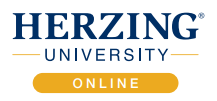How to Become a Medical Transcriptionist in Vermont

Want personalized recommendations?
Let's match you to the right program

Medical transcriptionists are healthcare professionals responsible for transcribing medical dictation into written reports. They listen to recordings made by healthcare professionals and convert them into written documents, ensuring accuracy and clarity.
Responsibilities of a medical transcriptionist include:
- Listening to audio recordings of medical dictation
- Transcribing medical reports, correspondence, and other documents
- Editing and proofreading transcriptions for accuracy and clarity
- Ensuring compliance with industry standards and legal requirements
- Maintaining patient confidentiality
Medical transcriptionists can work in various healthcare settings, including hospitals, clinics, physician offices, and transcription service companies. They may also have the option to work remotely from home.
To become a medical transcriptionist in Vermont, certain requirements must be met. These include:
-
Education: Most employers prefer candidates who have completed a medical transcription training program. These programs are designed to provide students with the necessary knowledge and skills to excel in this field.
-
Legal Requirements: In Vermont, there are no specific legal requirements for medical transcriptionists. However, employers may prefer candidates who are certified by a recognized professional organization, such as the Association for Healthcare Documentation Integrity (AHDI).
Dreambound, the largest platform for students to find and compare vocational training programs, can help aspiring medical transcriptionists in Vermont find suitable classes near them. By visiting the Dreambound website (linked to: https://dreambound.com/), users can search for medical transcriptionist classes in Vermont and compare various options. Dreambound provides detailed information about each program, including curriculum, duration, and cost, helping students make informed decisions about their education.
By utilizing Dreambound, aspiring medical transcriptionists in Vermont can easily find the best training programs to meet their educational needs and start their journey towards a rewarding career in medical transcription.
Article continues after recommendations
Recommended for you
How do I get my Medical Transcriptionist certification?
If you are interested in pursuing a career as a Medical Transcriptionist, the first step is to obtain the necessary certification. Certification is not always required for entry-level positions, but it can greatly enhance your job prospects and earning potential.
To get your Medical Transcriptionist certification, you will need to complete a training program that is approved by the Association for Healthcare Documentation Integrity (AHDI). AHDI is the leading professional organization for Medical Transcriptionists and offers two levels of certification: the Registered Medical Transcriptionist (RMT) and the Certified Medical Transcriptionist (CMT).
The RMT certification is designed for entry-level professionals and requires the completion of an AHDI-approved medical transcription training program. These programs can typically be completed online and range in length from a few months to a year, depending on the level of detail and depth of the program. During the training program, you will learn key skills such as medical terminology, anatomy and physiology, pharmacology, and transcription techniques.
Once you have completed your training program, you will need to pass the AHDI’s RMT certification exam. This exam includes multiple-choice questions and an audio transcription component. Passing the exam demonstrates your proficiency in medical transcription and validates your knowledge and skills in the field.
If you already have some experience as a Medical Transcriptionist, you may be eligible to skip the RMT certification and pursue the CMT certification directly. The CMT certification is a higher-level certification that is designed for experienced professionals who have a minimum of two years of acute care transcription experience. To earn the CMT certification, you will need to pass a comprehensive exam that covers a wide range of medical specialties and transcription skills.
It is important to note that certification requirements may vary by state, so it is important to research the specific requirements for the state in which you plan to work. Additionally, some employers may have their own certification requirements, so it is important to check with potential employers to ensure you meet their qualifications.
How do I get a job as a Medical Transcriptionist?
Once you have obtained your Medical Transcriptionist certification, you are ready to start looking for job opportunities in the field. There are several ways to find employment as a Medical Transcriptionist, including:
-
Online job boards: Many job boards, such as Indeed and Monster, have specific sections dedicated to healthcare and medical transcription jobs. You can search for positions based on location, experience level, and other criteria. Be sure to tailor your resume and cover letter to highlight your certification and relevant skills.
-
Networking: Reach out to professional organizations, such as AHDI, and attend industry events or conferences. Networking with other professionals in the field can help you learn about job openings and make valuable connections. Additionally, consider joining online forums or social media groups dedicated to medical transcription to connect with others in the industry.
-
Directly contacting healthcare facilities: Many hospitals, clinics, and medical practices employ their own Medical Transcriptionists. Research local healthcare facilities in your area and reach out to their human resources departments to inquire about job openings. Be prepared to provide your resume and any relevant certifications or training.
-
Freelancing: If you prefer to work independently, you can consider freelancing as a Medical Transcriptionist. There are several online platforms, such as Upwork and Freelancer, where you can create a profile and bid on transcription projects. This can be a good way to gain experience and build your portfolio, but keep in mind that freelancing may require more self-promotion and marketing to find clients.
When applying for Medical Transcriptionist positions, it is important to highlight your certification and any relevant experience or skills. Employers are looking for candidates who are detail-oriented, have strong grammar and punctuation skills, and can work independently. Additionally, having a solid understanding of medical terminology and the ability to accurately transcribe medical dictation is essential.
Career Paths and Opportunities after Becoming a Medical Transcriptionist
Becoming a Medical Transcriptionist can open up several career paths and opportunities for advancement. While many Medical Transcriptionists work in healthcare facilities, such as hospitals or clinics, there are also opportunities to work remotely or as a freelancer.
Here are a few potential career paths and opportunities after becoming a Medical Transcriptionist:
-
Medical Transcription Supervisor or Manager: With experience and additional training, you can move into a supervisory or managerial role. In this position, you would oversee a team of Medical Transcriptionists, ensuring accuracy and efficiency in their work. This role may also involve training new hires and implementing quality control measures.
-
Medical Coding or Billing: Medical Transcriptionists who have a strong understanding of medical terminology and coding systems may choose to pursue a career in medical coding or billing. In this role, you would assign codes to medical procedures and diagnoses for reimbursement purposes. Additional training and certification may be required for this career path.
-
Medical Editing or Proofreading: Some Medical Transcriptionists may choose to specialize in medical editing or proofreading. In this role, you would review and edit transcribed reports for accuracy, grammar, and formatting. This role requires a keen eye for detail and strong editing skills.
-
Remote or Freelance Transcription: Many Medical Transcriptionists choose to work remotely or as freelancers. This allows for flexibility in work hours and the ability to work from anywhere. Freelancing can involve bidding on projects through online platforms or building your own client base.
-
Medical Transcription Education: With experience and additional education, you may choose to become a medical transcription instructor or educator. This role involves teaching and training aspiring Medical Transcriptionists, either through online courses or in-person classes.
It is important to continue to stay updated on industry trends and advancements as a Medical Transcriptionist. Technology, such as voice recognition software, is changing the field and may require additional training or skills. Continuing education courses and professional development opportunities can help you stay current and competitive in the industry.
Get courses selected just for you
Try our powerful search engine
Article continues after recommendations
More recommendations for you
Final Thoughts
Becoming a Medical Transcriptionist can be a rewarding career choice for those who have an interest in healthcare and strong attention to detail. By obtaining the necessary certification and gaining experience in the field, you can open up a variety of career paths and opportunities for advancement.
Whether you choose to work in a healthcare facility, freelance, or pursue a specialized role, the skills and knowledge gained as a Medical Transcriptionist are valuable and in demand. With the healthcare industry continually growing and evolving, there will always be a need for accurate and timely medical documentation.
If you are considering a career as a Medical Transcriptionist, take the time to research and find a reputable training program that will provide you with the necessary skills and knowledge. Obtaining certification and gaining experience in the field will greatly enhance your job prospects and set you up for a successful career in medical transcription.
With Dreambound, find comprehensive guides that make starting in this field easier, each suited to a specific city. If you've planned a move or are doing research for another vocation, our other guides may be able to help.
- Medical Transcriptionist classes near me in Atlanta
- Medical Transcriptionist classes near me in Deltona
- Medical Transcriptionist classes near me in Milwaukee
- Medical Transcriptionist classes near me in San Bernardino/Riverside
- Medical Transcriptionist classes near me in Tulsa
Thinking about a potential career transition? Dreambound has detailed guides to help you with making informed decisions.

Sunshine is a member of the School Growth team at Dreambound, where she assists students and schools with their billing and onboarding needs. She is a licensed mechanical engineer. Outside of work, she enjoys road trips with her family, discovering cozy cafes, and exploring her love for art.



